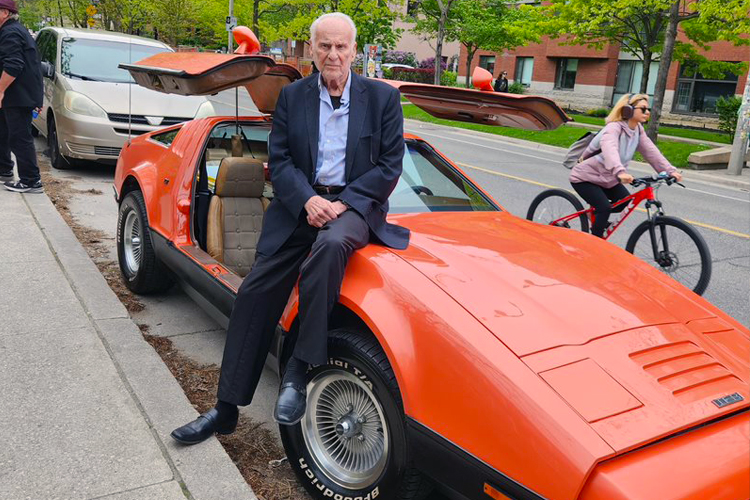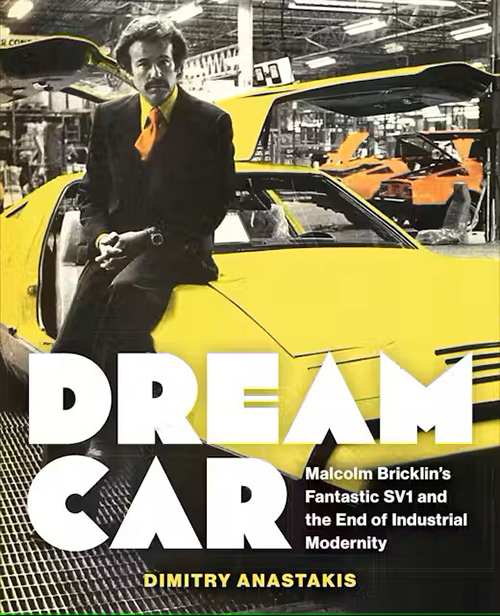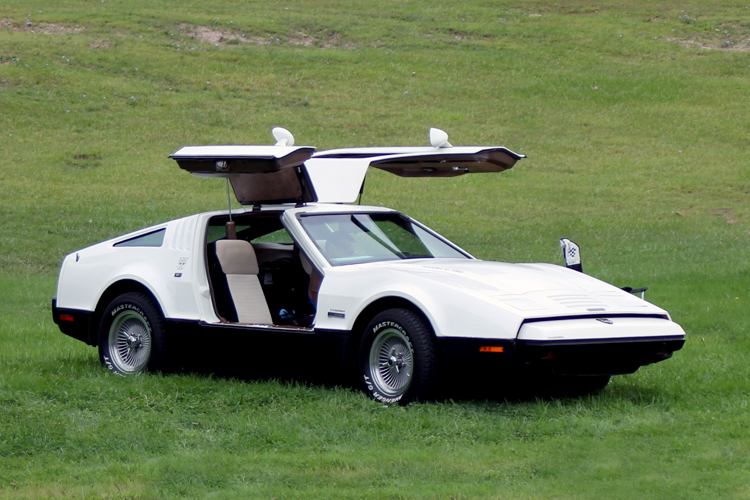When you think of New Brunswick, what images come to mind? The breathtaking beauty of the Bay of Fundy? Fishing? How about car manufacturing?
In the 1970s, New Brunswick was home to the production of a futuristic sports car, the Bricklin SV1 — the vision of American businessman Malcolm Bricklin.
A serial entrepreneur whose accomplishments include bringing Subaru cars to North America, Bricklin worked with then New Brunswick premier Richard Hatfield, who saw an opportunity to modernize the province’s manufacturing sector. In total, about 3,000 cars were built before Hatfield decided the escalating production costs no longer made the venture feasible.
This fascinating story of entrepreneurial spirit and innovation within the rapidly changing social environment of the 1970s is captured in Professor Dimitry Anastakis’ new book, Dream Car: Malcolm Bricklin’s Fantastic SV1 and the End of Industrial Modernity.

“It’s a really interesting story,” says Anastakis, who joined the Faculty of Arts & Science as the L.R. Wilson/R.J. Currie Chair in Canadian Business History in 2019 and is cross-appointed to the Rotman School of Management.
“This was the only car built by a new start-up in North America between the 1940s and Elon Musk’s Tesla.
“And it sits at this weird juncture where the car is built at a moment of incredible disruption in North America’s economy, society and politics, and during an incredible transition in the auto industry itself.”

The Bricklin SV1, which stands for safety vehicle, is hard to miss. With a sleek design, plastic body and gull-wing doors, it resembles another sports car of the same era — the DeLorean. But that car, notes Anastakis, was manufactured in Northern Ireland, not in North America.
Anastakis wrote the book in a way that mimics driving a car — you can go where you want at any speed you want. With this mindset, the book’s chapters can be read in any order.
“I wanted to make it accessible and fast-paced, and I wanted to make it an open road,” says Anastakis. “I say in the book, you get behind the wheel and you can jump to whatever chapter you wish, and you don't miss a beat in the story itself.”
One chapter focuses on entrepreneurship, looking at the vision, accomplishments and profound societal impact of major car company leaders like Henry Ford, Walter Chrysler and Louis Chevrolet.
Another chapter looks at the business of building cars and how it’s changed. “It's about how the auto industry transformed from one that's focused on making cars, to one that is much more focused on making money,” he says. “By the time you get to the ‘60s and ‘70s, what's good for General Motors is no longer what's good for the United States.”
Anastakis also delves into just how Bricklin was able to construct the SV1 by avoiding expensive production steps. He opted to purchase ready-made engines from Ford and Chrysler and chose a plastic car body of prefabricated fiberglass to avoid the costly process of painting.
“If you fast forward to Elon Musk, he does the exact same thing,” says Anastakis.
Another chapter examines cars and their close association with technology and the idea of futurism.
“In the ‘70s, you're at this point of what I call high industrial modernity, where the automobile is connected to modern technologies around space travel, plastics, and technological feats that humans are doing that oftentimes will have a dark side to them. Bricklin wants to take advantage of this kind of futurism and decides to build a car that looks like it could be in space.”

And this notion of cars representing the future hasn’t changed. “When you go to car shows, you want to see concept cars, the future. There's always a newness to cars, where we think about what's next.”
Another chapter explores sex and gender, as cars were, and continue to be, marketed to boost sex appeal.
“Bricklin tries to sell his car as a sexy sports car like a Corvette. So I use that to talk about the sexual revolution going on in the ‘60s and ‘70s. I use the vehicle to talk about muscle car masculinity, the sexual revolution, and because Bricklin himself is an alpha male, he's a real product of the sexual revolution run amok.
“And on flip side you have Richard Hatfield, who's a closeted gay premier of New Brunswick, which is one of the most conservative provinces in Canada. So talking about the car and sexuality and Bricklin and Hatfield, it's a great way to talk about what's going on in this period of change.”
While writing the book, Anastakis found himself listening to a lot of car-themed music of the period, so he decided to create a playlist for readers.

“There's a lot of famous songs about cars, and I use a lot of those songs from the era because they speak to a lot of the issues that are in the story,” he says.
Some of the tunes include Bruce Springsteen’s Born to Run, “which is all about automobility and the American Dream,” he says. There’s also Drive My Car by the Beatles, Cars by Gary Numan, and Paradise by the Dashboard Light by Meatloaf. This playlist proved so popular, Anastakis created a second playlist based on suggestions from readers.
In August, Anastakis plans on attending a 50th anniversary event in New Brunswick celebrating the Bricklin SV1, with current owners bringing their prized vehicles back to their place of origin. He guesses there’s still about 1,500 on the road in Canada.
“The car remains at the centre of so many aspects of the way we live, whether it's the built environment, pollution, the threat of climate change, how we go to work,” says Anastakis.
“The automobile has played a central role in so much of North American society’s evolution in the last 150 years. And viewing the world from the windshield of this car, you can understand just how profound automobility’s impact is on ordinary people's lives.”

